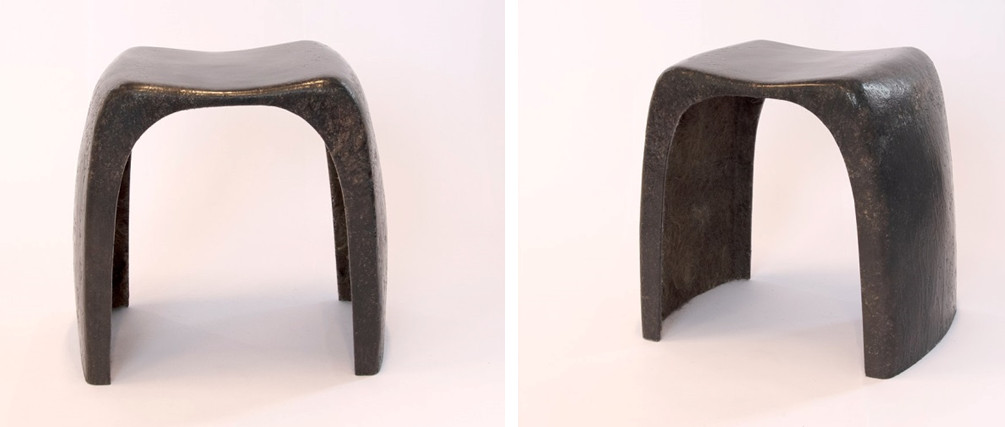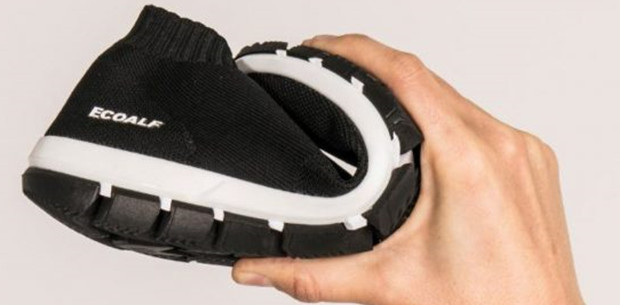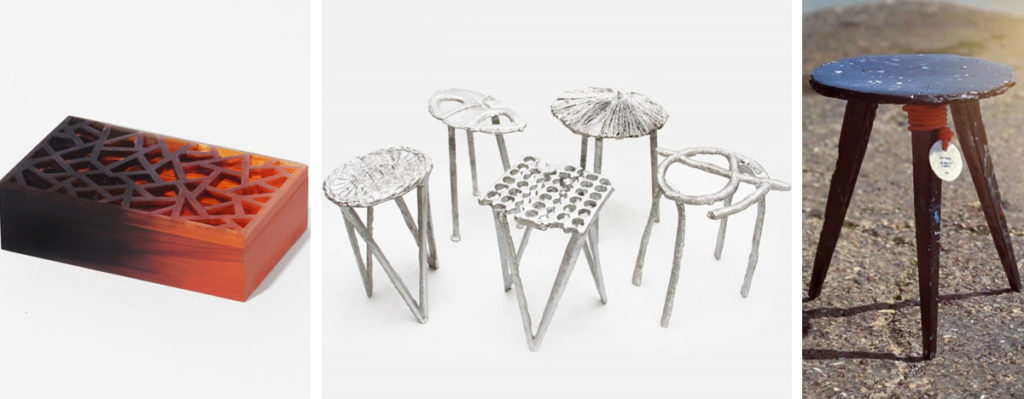Our previous post about cool adaptive reuse of old buildings and properties got us thinking about other interesting types of reuse. As it happens, we’ve come across some great examples in recent months. Here’s an assortment of interesting second lives for everyday items.
Dressing table stool made from hair
What better to sit on when brushing your hair than a stool made from hair? Lots of things, perhaps, but Designer Oksana Bondar’s “Wiggy” stool is still intriguing. Bondar created Wiggy after identifying human hair clippings as “an abundant and valuable but neglected fiber.” She formed the hair into a solid shape by laminating it with PLA bioplastic. According to Bondar’s website, Wiggy is, among other things, a reaction to the United Kingdom’s withdrawal from the European Union, an investigation of the prospects of vernacular production, a narrative that aspires to challenge people’s perception of aesthetics of objects through their lifecycles and an exploration of the concept of designers being farmers of material. Ok, then!

Shoes made from algae and ocean waste
It has become somewhat commonplace to make clothing from recycled plastic bottles. Spanish clothing company Ecoalf has gone further with its new Shao sneakers. Ecoalf uses bottles that fisherman recover from the Mediterranean Sea to create the black knitted uppers of the shoes, and converts a type of algae that grows in excess in lakes and rivers into a flexible foam for the soles.

Recycled floating park
In Rotterdam, the Recycled Island Foundation and partners recently assembled a prototype park using floating platforms created from recycled plastic fished from the New Meuse River. The project aims to solve two problems: plastic waste in waterways and a lack of green space in Rotterdam. In addition, the bottoms of the platforms support underwater plants, creating habitat areas for fish, according to the project website.

New life for hair, aluminum cans and plastic waste
Finally, the art collective Studio Swine (Super Wide Interdisciplinary New Explorers) has created works using a variety of waste materials.
“Hair Highway” converted human hair into combs, boxes and decorative objects, aiming to show the potential of hair as “an abundant and renewable alternative to diminishing resources such as tortoise shell or tropical wood.”
“Can City” gathered aluminum cans from local waste collectors, known as Catadores, in Sao Paulo, Brazil, melted the cans down using a mobile foundry fueled by waste vegetable oil from local restaurants and then created new objects from the aluminum.
“Sea Chair” is a stool created from plastic that fisherman collected from ocean waters.

We find all of these creations to be inspiring – not just practical but also imaginative, just like the best real estate adaptive reuse projects!